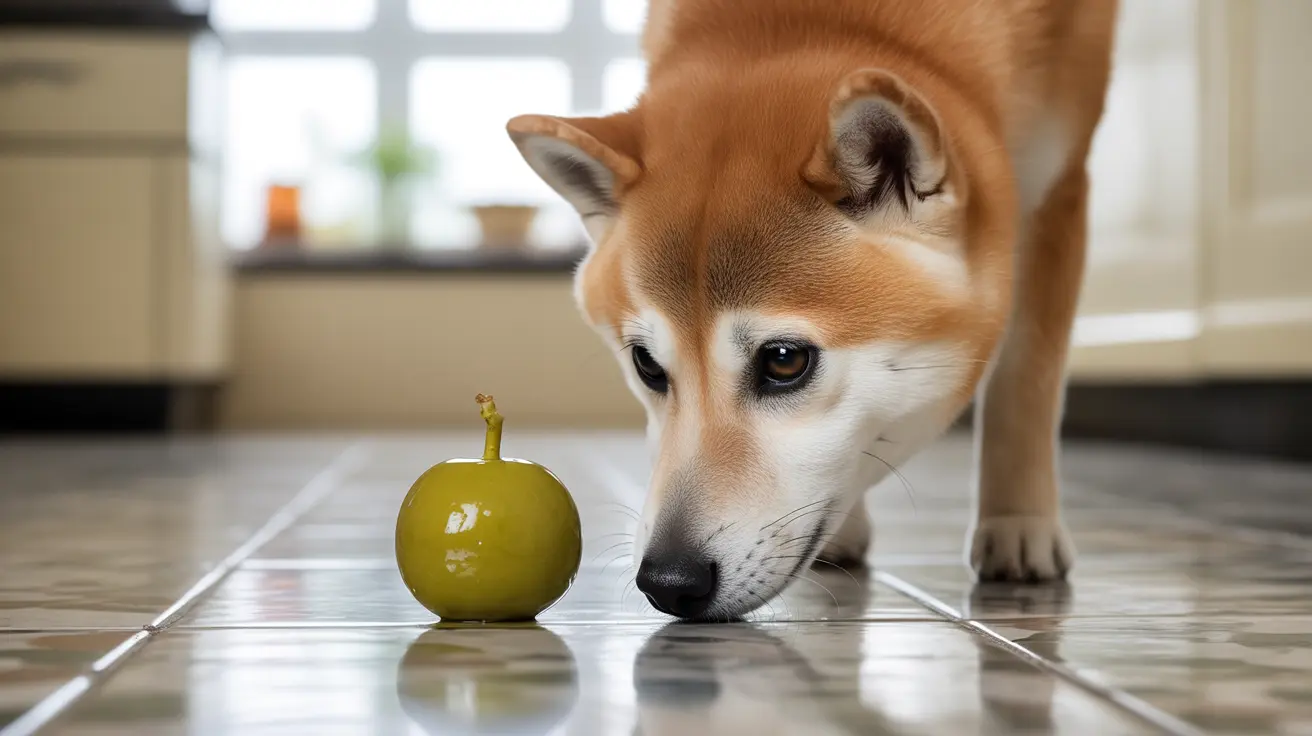Understanding Green Olives and Dogs
As pet parents, we often wonder which human foods are safe to share with our furry friends. When it comes to green olives, many dog owners are curious about whether these Mediterranean fruits can be a safe addition to their pet's treat rotation.
The good news is that dogs can have green olives in moderation, but there are important guidelines and precautions to consider before offering this savory treat to your canine companion. Let's explore everything you need to know about feeding green olives to dogs safely.
Safety Guidelines for Feeding Green Olives to Dogs
Preparation and Selection
When offering green olives to your dog, proper preparation is crucial for their safety:
- Always remove pits to prevent choking hazards
- Choose plain, unseasoned olives
- Avoid olives preserved in brine or salt
- Never give stuffed or flavored varieties
Recommended Serving Size
Moderation is key when it comes to feeding olives to dogs:
- Limit treats to 1-2 olives occasionally
- Consider your dog's size when portioning
- Watch for any digestive reactions
- Keep olive treats to less than 10% of daily food intake
Potential Benefits and Risks
Health Benefits
While not essential to your dog's diet, plain green olives do contain some beneficial nutrients:
- Healthy monounsaturated fats
- Vitamin E and antioxidants
- Anti-inflammatory properties
- Small amounts of fiber
Possible Risks and Concerns
Be aware of these potential dangers when feeding green olives to dogs:
- High sodium content in brined olives
- Choking hazards from pits
- Digestive upset from overconsumption
- Dangerous additives in flavored varieties
When to Avoid Green Olives
Some dogs should not be given olives at all, including:
- Dogs with sodium restrictions
- Pets with pancreatitis
- Dogs with kidney issues
- Those with sensitive stomachs
Signs of Olive-Related Problems
Watch for these symptoms after feeding olives:
- Excessive thirst
- Vomiting or diarrhea
- Lethargy
- Loss of appetite
Frequently Asked Questions
Can dogs safely eat green olives, and should the pits be removed before feeding?
Yes, dogs can safely eat green olives, but pits must always be removed before feeding. Olive pits pose serious choking hazards and can cause dental damage or intestinal blockages if swallowed.
Are green olives with added seasonings or brine harmful to dogs?
Yes, seasoned or brined olives can be harmful to dogs. The high sodium content and additional seasonings may cause dehydration, digestive issues, or even toxicity. Only plain, unseasoned olives are safe for dogs.
How many plain, pitted green olives can I give my dog without risking health issues?
Most dogs can safely consume 1-2 plain, pitted green olives occasionally as a treat. The exact amount depends on your dog's size, but olives should never make up more than 10% of their daily caloric intake.
What are the potential risks if my dog eats olives with pits or stuffed with toxic ingredients?
If your dog consumes olive pits or stuffed olives, they may experience choking, intestinal blockage, or toxicity from harmful ingredients like garlic or blue cheese. Contact your veterinarian immediately if this occurs.
Do green olives provide any nutritional benefits to dogs, or are they purely an occasional treat?
While green olives contain healthy fats, vitamins, and antioxidants, they should be considered purely as an occasional treat. Dogs get all necessary nutrients from their regular balanced diet, making olives' nutritional benefits minimal.
Conclusion
While dogs can have green olives in moderation, they should be viewed as an occasional treat rather than a dietary staple. Always ensure olives are plain, pitted, and unseasoned before sharing them with your furry friend. When in doubt, consult with your veterinarian about incorporating any new foods into your dog's diet.






